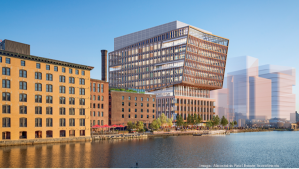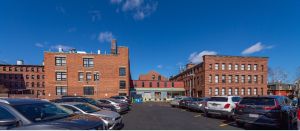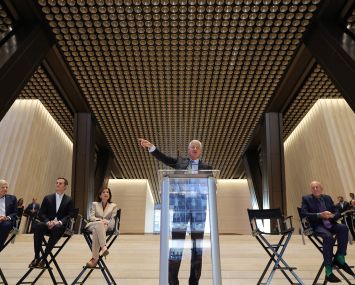Presented By: Colliers
The Shifting Nature of Boston Life Sciences: Shifting Demand, New Dominant Submarkets

Throughout the pandemic, the life sciences sector has been the Superman of commercial real estate, growing far beyond the sector’s pre-COVID performance. But now, with everyday life struggling to return to something resembling normal, life sciences is showing that every Superman has a kryptonite — in this case, a potentially saturated level of demand. Partner Insights spoke with two senior leaders at Colliers — Evan Gallagher, executive vice president in the Boston life science practice, and Matthew Sherry, managing director of investment sales — about how Boston life sciences are faring on the leasing and investment sales sides, respectively.
Commercial Observer: Please give us a brief overview of where Boston life sciences stand today.
Evan Gallagher: The long-term view for the life science ecosystem remains really strong, but demand has dropped. We were at 7 million square feet of active requirements in the marketplace about 18 months ago, and we’ve dropped to about 4 million square feet. That’s pretty drastic.
What do you attribute that to?
EG: Over the past 10 months, the number of IPOs here in Massachusetts dropped significantly. Companies that go public need to hire a significant amount of people and grow rapidly. So, part of it is the slowdown in the IPO market.
Matt Sherry: What we’re seeing on our side is similar. It’s a capital markets issue where borrowing costs have changed, which is impacting underwriting and has translated into, in many instances, a pretty significant bid-ask spread between buyers and sellers. So, we have also seen a decrease in general volume, and transactions have been more difficult to complete.
EG: We do a fair amount of tenant representation. Companies coming up with groundbreaking medicines have significant optionality, whether it’s in the sublease market — we’re seeing 70 subleases throughout greater Boston, as opposed to zero a year and a half ago — or on a direct basis within submarkets throughout greater Boston. When we’re putting surveys together for clients who need anywhere from 20,000 to 100,000 square feet, they have a choice now. That’s empowering to them and exciting for the biotech community.
Evan, what types of companies are active in the Boston leasing market for life sciences?
EG: Big Pharma has been extremely active over the last 120 days. We’ve seen a handful of elephant-type requirements fall in the 300,000-to-600,000-square-foot range. Those are real needle movers. People credit this to two things. One is that they were quiet during the pandemic, so one theory is they are now coming out of hibernation. The other is, they’re in an acquisition mode, looking to acquire great science.
For the early- and mid-stage companies, whether they’re private or public, it comes down to two things. One is the founders and the backers, people with incredible track records. They’re taking those track records and having success in securing large financing rounds. Those who end up getting strong data will have no issues raising new rounds of financing.
Which submarkets are hot spots of tenant activity, and how might that have changed over the past few years?
EG: Kendall Square had zero vacancy over the last three years, so we were spending more time in secondary markets. That has changed. Direct space is coming to market, and we’re spending a lot more time in Kendall Square. Seaport also continues to be hot. We did a big Eli Lilly deal there, and CRISPR and Vertex are there as well. Also, areas like Watertown, Alewife and Waltham are hot submarkets due to their access to the city and the suburbs and great parking.

What has happened to rents in the region since the start of the pandemic?
EG: Rent shot up significantly earlier in the pandemic, and the past six months have seen them stabilize.
Any recent deals you could share with us?
EG: One noteworthy deal was Tome Biosciences. They have great backers, like Arch Ventures, which is one of the most active groups out there currently. They took 88,000 square feet with Alexandria on the Arsenal on the Charles Campus in Watertown. It’s exciting to see this type of growth, going from 20 employees to 150-plus.
Matt, let’s talk about investment sales in the region. What have you been seeing over the past few years in Boston life sciences?
MS: The last few years have seen a barbell effect. We’ve seen established and well-leased product in core locations, where the buyers have typically had a strong foothold in the market for years, and we’ve seen a lot of development and conversion plays. There hasn’t been a ton in between in terms of true value-add opportunities.
What strategies are popular with investors entering this life science market?
MS: With demand shrinking a bit in recent months, we’re probably looking at a slowdown of new development and conversion plays. But there has definitely been a race to expand to satisfy any demand in the market. So back to my barbell comment earlier, it has been core or development. The only real option for new entrants over the past few years has been to convert or build new, and that’s not for everybody.
Any recent deals you can share with us?

MS: We just closed a deal in Cambridge called Blackstone Science Square. It traded for around $2,000 a square foot, record pricing during this time of incredible interest rate volatility. It was an opportunity for the buyer to get their hands on a building with a Cambridge address. The inventory in Cambridge is mostly controlled by long-term holders, so the buyers saw this as an opportunity to plant a flag in the most core life science market in the world.


